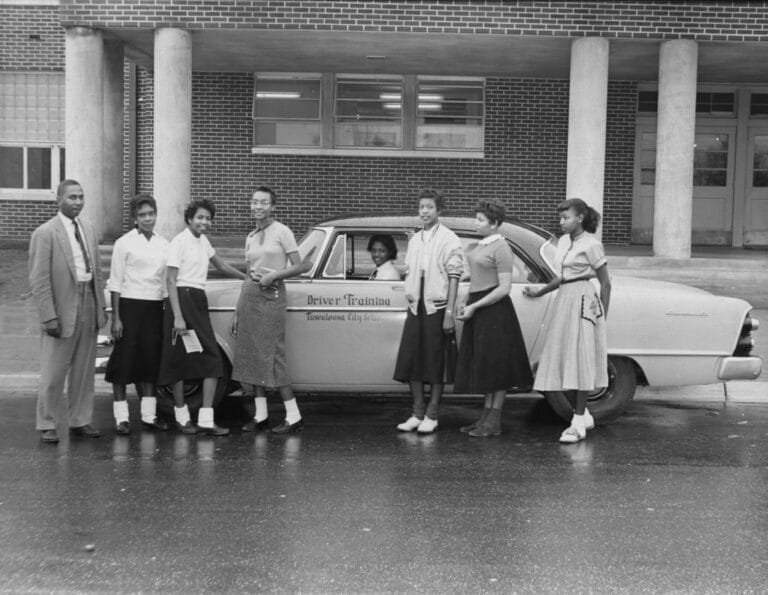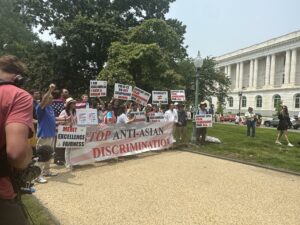70 years after Brown v. Board, a resurgence of race-conscious admissions policies in schools

Ask most people to name five Supreme Court decisions, and Brown v. Board of Education will make their list. Its pronouncement that “separate educational facilities are inherently unequal” is so widely known and so well-respected that people of many ideological backgrounds quote it and try to claim its mantle, even when they have vastly different views about the role of race in society and the law.
It’s not surprising that people would try to cast themselves on the side of justice. What’s surprising is that even supporters of racial preferences in public schools try to square their views with Brown, since Brown deemed excluding children from school based on race unconstitutional. Advocates of affirmative action say that racial preferences are different than 1950s-era segregation because they’re not enacted out of ill will. Instead, they’re meant to promote diversity or to help those presumed to be contemporary victims of historic discrimination.
But as the Supreme Court ruled last term, using race in modern America is not benign. Writing for the majority in SFFA v. Harvard, Chief Justice Roberts wrote that the diversity rationale relies on stereotypes about racial groups (i.e., the assumption that different racial groups bring different things to the table) and, because admissions is a zero-sum game, racial preferences penalize people simply for being born into the “wrong” race.
Justice Clarence Thomas was even more strident in his concurrence. He eviscerated the notion that racial preferences can be justified as a remedy for societal discrimination. To begin with, universities usually assume the existence of discrimination merely because of disparities in representation among racial groups, but “not all disparities are based on race,” and even where they exist overall, those characteristics don’t apply to everyone in the group. To the extent that individual black Americans have fewer means, or poorer health, or suffer from any other disparities that deserve some sort of remedial measure, Justice Thomas said universities may consider those factors. But using skin color as a heuristic reduces individuals to the government’s monolithic views of racial stereotypes.
Despite the enduring lessons of Brown and the Court’s rejection of racial preferences in higher education last term, schools are looking for ways to continue injecting race into their admissions policies. Shortly after the Supreme Court’s decision in the Harvard case was issued, videos surfaced of administrators and even law school deans defiantly urging schools to hide their discrimination by using admissions essays to glean an applicant’s race or by using race as a factor in faculty hiring, but never putting anything in writing.
That trend is trickling down into K-12 education—which is especially ironic given that that’s the very context addressed by Brown v. Board. The school board for Thomas Jefferson High School for Science and Technology, one of the best public high schools in the nation, recently threw out the school’s test-based admissions system in favor of a plan that reserved seats for certain schools and evaluated applicants through a “holistic” review. The goal was to change the racial composition of the student body — and it worked. The year after the board’s new admissions system went into effect, the share of Asian American students dropped from 73 percent to 54 percent.
Boston Public Schools similarly changed the admissions criteria at their three prestigious “exam” schools to change the racial composition of the student body. It axed the required tests and set aside 20 percent of seats for kids with the highest GPAs and the other 80 percent for students with the highest GPAs from each zip code. While proponents described the program as a benign attempt at increasing diversity, several Asian American students who would’ve been admitted under the old program did not see it that way. They brought a lawsuit arguing that the new program’s racial proxies were unconstitutional.
Racial preferences are also proliferating outside of schools. Several states have race- or sex-based quota for governmental bodies. California even recently took the dramatic step of mandating private companies to place a minimum number of women and racial minorities on their boards of directors.
The impulse to racially balance every school, board, or workplace gets Brown exactly wrong. The promise of Brown was never proportional representation; it was equal treatment based on race through the elimination of racial discrimination in the law. There will always be disparities in racial representation because individuals don’t make decisions in lockstep with others of the same race. Individuals make decisions based on their own specific needs and wants. Disparities don’t always arise as a result of discrimination, but ensuring the government’s preferred balance between races necessarily requires it.
Brown sought to eliminate the use of race—a crude heuristic—from admissions, not make it paramount in everyday interactions. Seventy years later, that lesson is more important than ever.







